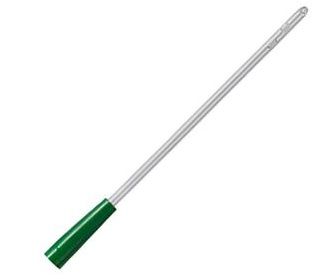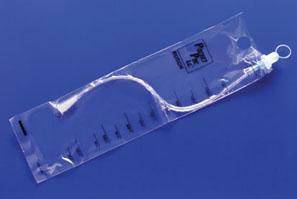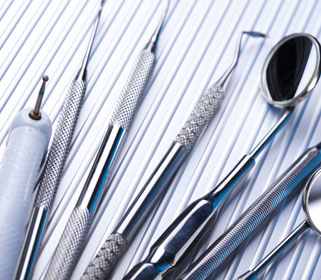Home » Home Health Care Products & Supplies » Foley Catheters » Foley Catheters
Foley Catheters

GentleCath Urinary Intermittent Straight Catheter
Retail Price: $104.96
Your Price: $74.71
 Unit: 100/box
Unit: 100/box

Pocket Pack Intermittent Catheter Kit
Retail Price: $8.13
Your Price: $6.18
 Unit: single
Unit: single
Foley catheters are thin, flexible, sterile tubes that have an attachment at one end that inflates like a balloon. Foley catheters are typically used to drain urine from the bladder. However, Foley catheters are also used to assist with many disorders, problems, and procedures, such as:
• Urine retention
• Urinary incontinence
• Urinary hesitancy
• Urinary strain
• Decrease in size and force of urinary stream
• Urinary stream interruption
• Sensation of incomplete emptying
• Obstruction of the urethra by an anatomical condition that makes urination difficult (i.e. prostate cancer, prostate hypertrophy, narrowing of the urethra)
• Urine output monitoring in a seriously ill or injured person
• Collection of a sterile urine specimen for diagnostic purposes
• Nerve-related bladder dysfunction, such as after spinal trauma
• Imaging study of the lower urinary tract
• Surgery recovery
Foley catheters can also be used to allow the induction of labor by preparing the cervix. The catheter is inserted behind the cervical wall and inflated. The remaining length of the catheter is gently pulled and taped to the inside of the woman's leg. The inflated balloon applies pressure to the cervix, like the baby's head would prior to labor, which causes it to dilate. Over time the catheter is adjusted and re-taped to maintain cervical pressure. When the cervix has dilated sufficiently, the Foley catheter simply drops out.
To drain urine, the Foley catheter is passed through the urethra and into the bladder. This procedure is called urinary catheterization. After the Foley catheter is inserted, the balloon is filled with sterile water. Thus the Foley catheter is prevented from leaving the bladder until the balloon is emptied. The balloons typically come in two different sizes: 5 cc and 30 cc.
Foley catheters also come in several sub-categories:
• Coudé catheters – due to the 45° bend at the tip, these catheters allow easier passage through an enlarged prostate.
• Council tip catheters – these catheters have a small hole at the tip, allowing them to be passed over a wire.
• Suprapubic catheters – these catheters are hollow, flexible, and used to drain urine from the bladder. However, these are inserted into the bladder through an incision a few inches below the navel. This is done under a local anesthetic or a light general anesthetic.
• 3-way catheters – these are used primarily after bladder, prostate, or prostate cancer surgery. These catheters have a third arm or bell that allows an irrigating fluid to pass to the tip of the catheter thru a small separate channel into the bladder. This fluid serves to wash away blood and small blood clots through the primary arm that drains into a collection receptacle. This prevents larger clots from forming, which could plug the catheter. The second arm, or inflation arm, has a small plastic valve that allows for the introduction or removal of sterile water through a very small channel to inflate or deflate the retaining balloon.
The circumference of a Foley catheter is described using Frenches (1 FR is equivalent to 0.33 mm). The most common catheters typically range from FR 10 - FR 28.
The Foley catheter was designed in the 1930’s by Dr. Frederick Foley, a surgeon in Boston, Massachusetts. Dr. Foley’s original design was adopted by C. R. Bard of New Jersey. He would manufacture the first prototypes and name them in honor of Dr. Foley. They have been standard items of medical equipment since then.
After evaluating our inventory of Foley catheters, please call our customer service department toll free at 1-877-706-4480 if you have any questions or need further assistance.















